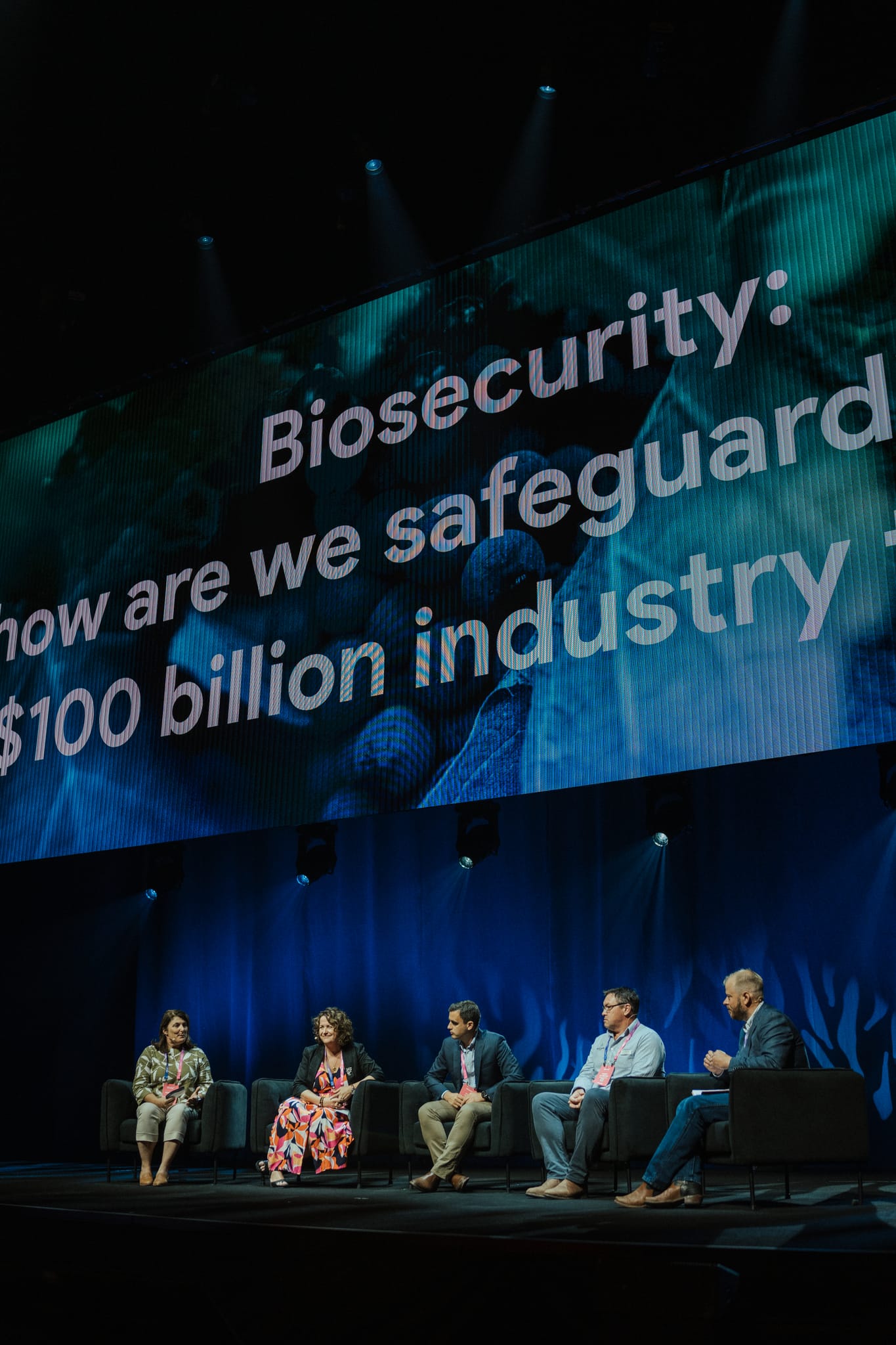Enhanced technology to protect Australian agriculture
The Federal Budget includes $1 billion over four years on measures to keep out pests and disease to protect our agricultural industries. Many would argue the recognition of biosecurity as a funding priority is well overdue.
At evokeAG. 2023, a panel of experts highlighted the value of biosecurity and the enhanced technology that will help us detect and respond to threats more effectively.
Principal of Agsecure, Andrew Henderson, has strong views about the value of biosecurity.
“All of our livelihoods are fundamentally underpinned by an effective functioning biosecurity system, and further, this system underpins the social and economic fabric of rural and regional Australia,” he said.
“The role that our biosecurity system plays in the sustainability and prosperity of our national economy and ultimately, our national security, is completely underdone.”
Andrew said our biosecurity system is impacted by geopolitical disruptions on the other side of the world, through to border activities and issues affecting producers on the ground every single day.

How could technology tackle some of those challenges?
Ryan Higgs is Co-Founder and CEO of Onside, a digital check-in platform out of New Zealand that simplifies safety, streamlines compliance, drives operations and powers biosecurity.
RELATED: Onside’s Series A set to launch at evokeAG. 2022 Investor Dinner
He explained the app came from the need to manage the thousands of people coming and going from a farming business he used to work at.
To date, Onside has raised $6 million in private investment and secured $5 million of funding from the New Zealand government to scale up the platform. Ryan is buoyed by the innovation in the sector and appetite to fund it.
“I am encouraged by the positive investment environment and the appetite to back tech companies like Onside solving big problems that matter” he said.
When considering biosecurity, he said there was an enormous amount of innovation occurring from sensing technology to biologicals to software and biotechnology, with hundreds of millions of dollars being invested.
He pointed to machine vision software being developed by Think Digital, which assists with the early detection of emergency diseases.
Think Digital has already worked with Animal Health Australia on developing an augmented reality app to provide training in emergency animal diseases in sheep.
What’s on the wish list
General Manager of Emergency Preparedness, Animal Health and Biosecurity at Animal Health Australia, Dr Samantha Allan, said faster and more accurate surveillance data is important, particularly in remote regions of northern Australia which are more likely to face biosecurity threats.
“We also need more practical analytical and diagnostic tools, using lessons from Australia’s COVID-19 response, to produce tools that can be used in the field, and in real time to guide decision marking and assist with undertaking further laboratory diagnostics – akin to a rapid antigen test and then a PCR lab test for COVID-19,” she said.
Samantha points to the potential benefits of producing effective animal vaccines by applying messenger ribonucleic acid (mRNA) technology – a technology used for many infectious diseases including COVID-19 that instructs biological cells to use the organism and its biological processes to treat and prevent diseases.
“If Australia could become self-sufficient in vaccine production this would be a great step forward,” she said.
Chief Executive Officer of Plant Health Australia, Sarah Corcoran, believes more resources and technology is needed to understand and defend threats to plant based industries.
“Our plant biosecurity system is under pressure from the cumulative impacts of approximately 40 plant incursions in Australia every year. It’s a busy space and one that requires so much support to understand the hosts, the pests and their impacts,” she said.
Preparing for threats
Australia’s livestock sector is focusing on biosecurity preparedness.
“Australia can be really proud about the investments we have made so far in biosecurity, with key resources such as the Emergency Animal Disease Response Agreement between governments and industry about how we will pay for a really large animal disease response,” said Samantha.
 “We also have pre-agreed national response plans for more than 50 exotic diseases that we would respond to if they arrived on our shores.
“We also have pre-agreed national response plans for more than 50 exotic diseases that we would respond to if they arrived on our shores.
“And we have successfully mounted responses to Avian influenza several times, most recently in Victoria in 2020, in a middle of a COVID-19 lockdown.
“We have a good foundation, but the risk environment we are operating in today has changed compared to 20 years ago. So it is time to review these arrangements and investments, and hopefully with better ag tech, we can be more efficient.”
The detection of the Varroa mite in bee hives near Newcastle in November 2022 has had far-reaching consequences for the honey bee industry but also the trees and crops that rely on bees for pollination.
Chief Executive Officer of the Australian Honey Bee Industry Council Danny Le Feuvre said it’s tested the biosecurity system.
“This current outbreak has seen industry and government working together, but it would be useful to make decision making more transparent and recognise that jurisdictional restrictions across state borders have had an impact on the industry.”
He endorsed calls by other panel members for surveillance technology that was tried, tested and true to produce field data that was defendable and recognised by the authorities.
“We need to focus on preparedness and once an outbreak occurs bring in all the technology that’s needed to tackle the problems.”
RELATED: Innovative bee tracker measures real-time pollination, supercharging yield and profit
Everyone has a role to play
Panel members agreed that biosecurity is a responsibility shared by farmers, government and the community at large.
“Biosecurity starts at home, so every landholder needs a biosecurity plan in action, not collecting dust on a shelf in the office,” Samantha said.
“The biggest difference people can make is the time they take to a report a threat on their farm to the chief veterinary officer or other authorities. And it’s important to remember that you can’t hide a biosecurity problem on a farm for very long.”

Ryan added that people often don’t realise how connected the agricultural sector is.
“When we look at our data, typically all farms are connected to each other within just three steps,” he said.
“It’s because of this connectedness that pests and diseases can spread so rapidly.
“The earlier you can identify a pest or disease, the more options you have to respond so investment in preparedness and early detection delivers the best bang for buck,” said Ryan.
evokeAG. 2023 took on some of the key issues confronting Australia’s agrifood sector, to learn more about how innovation helping tackle them visit evokeag.com and save the date for evokeAG. 2024 on 20 and 21 February 2024 in Perth.
In the meantime catch up on the other conversations about sustainability, climate resilience and the role of agtech in meeting those challenges from evokeAG. 2023 here.
